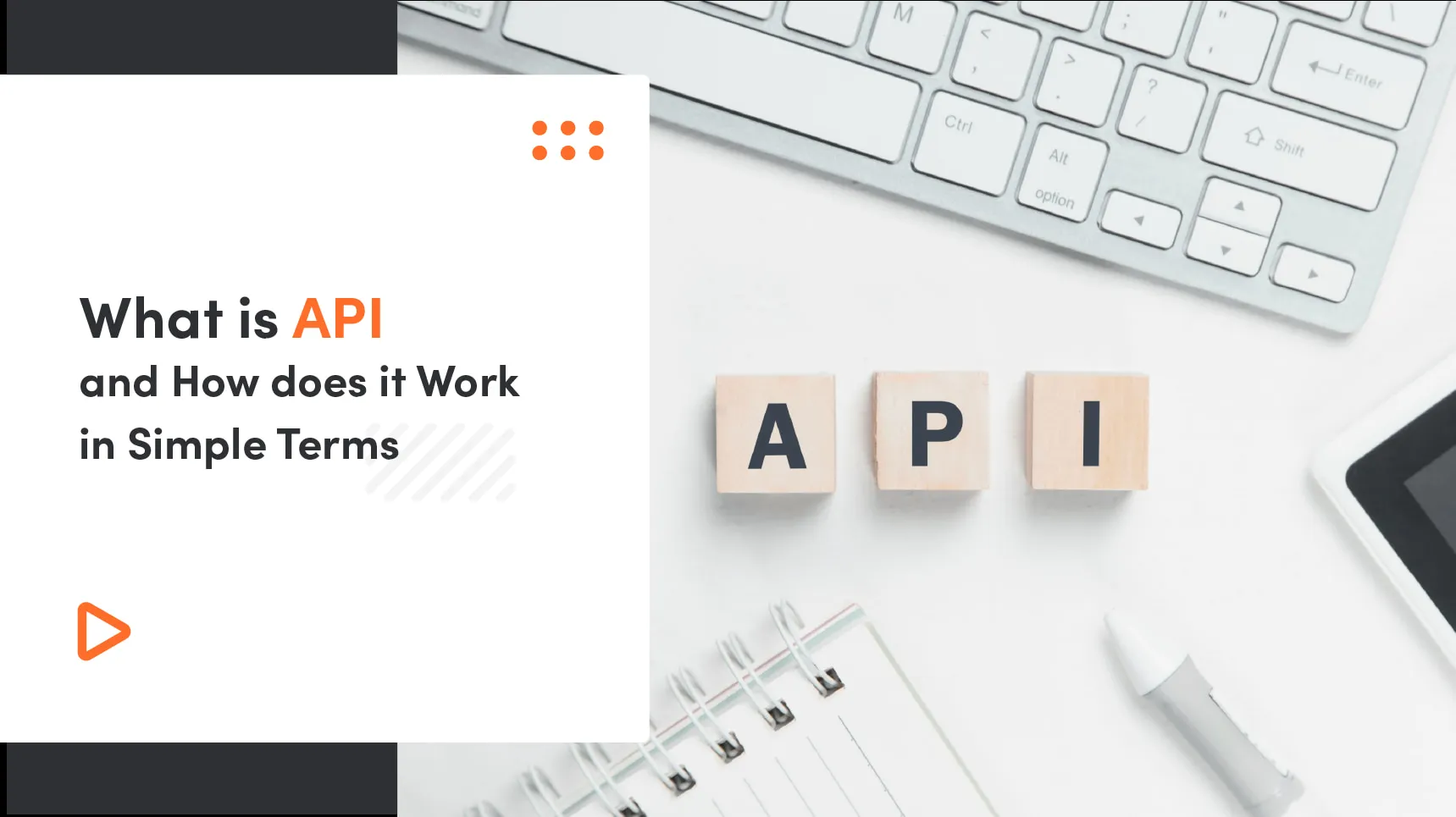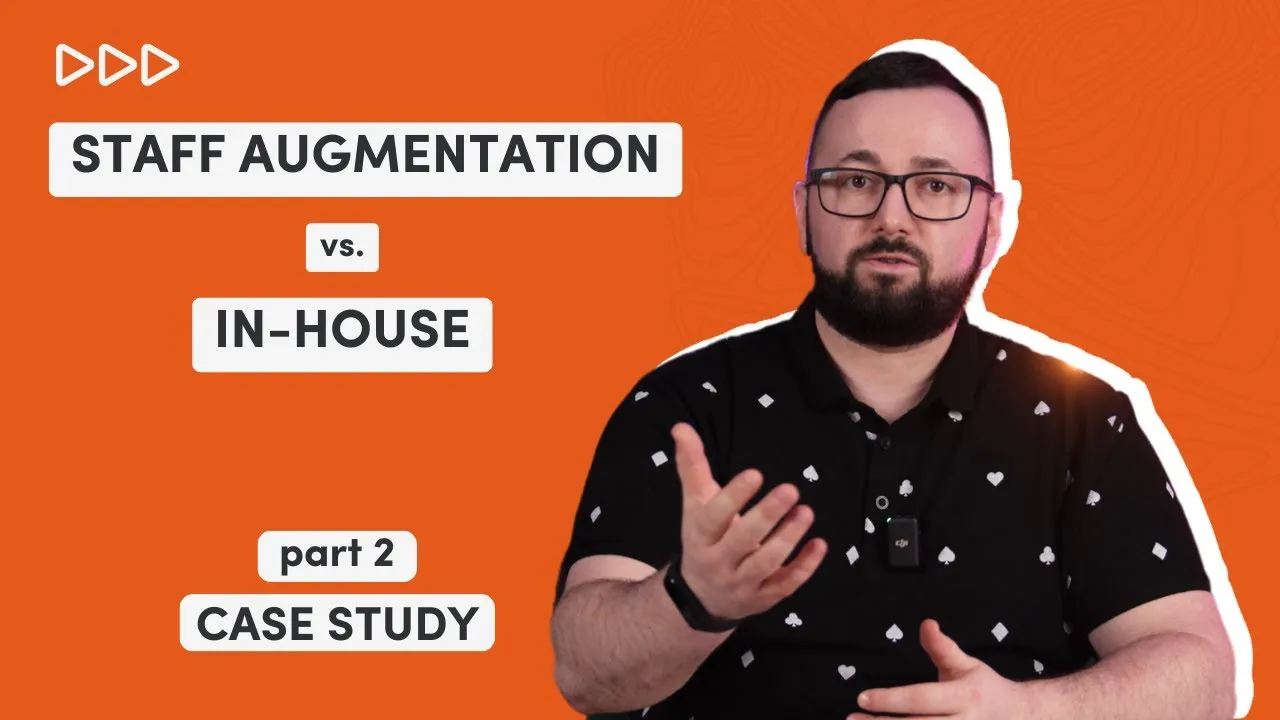As humans, we use words, gestures, and facial expressions to convey our ideas, desires, and thoughts. To interact with one another, software or its parts do not require a graphical user interface. APIs, or Application Programming Interfaces, are machine-readable interfaces that allow software products to communicate data and functionality.
Today, we will talk about APIs in detail: what is an API, what are the different types of APIs, what are the different purposes of APIs, and so on. So, don't miss a single heading in this article!
What you will learn from this article:
- What is the primary purpose of an API?
- How does an API work in the context of software communication?
- What are the key components of an API request?
- Why are APIs important for modern software development?
- Difference between API and web services?
- What are some common challenges in producing and consuming APIs?
- What are the different types of APIs based on availability?
What is an API (Application Programming Interface)?
APIs are programming interfaces** that connect platforms or programs, allowing them to make queries and exchange data. They lay forth a set of guidelines and procedures that will govern how these platforms interact.
The programming interfaces ensure that various types of programs may communicate with one another by specifying particular actions. This makes it easier to integrate diverse solutions so that ready-made functionalities can be used in other applications.
Basic Terminology Related to APIs
- API Key:
- An API key is a unique identifier used to authenticate requests associated with your project for usage and billing purposes. It is typically provided by the API provider to the developer and must be included in API requests to access the service.
- Endpoint:
- An endpoint is a specific URL at which an API can be accessed by a client application. Each endpoint corresponds to a specific function or data resource that the API exposes. For example, an endpoint might allow you to retrieve user data, post new information, or delete an entry.
- Rate Limiting:
- Rate limiting is a mechanism employed by APIs to control the amount of incoming requests to the server within a given timeframe. It helps prevent abuse and ensures the server remains performant and available to all users. Limits might be defined in terms of requests per second, minute, hour, or day.
- REST vs. SOAP:
- REST (Representational State Transfer):
- A flexible, lightweight architecture often used for building web services. It relies on standard HTTP methods like GET, POST, PUT, DELETE and is typically used with JSON or XML. RESTful APIs are stateless, meaning each request from a client contains all the information the server needs to fulfill that request.
- SOAP (Simple Object Access Protocol):
- A protocol for exchanging structured information in web services. It uses XML for message format and relies on application layer protocols, usually HTTP or SMTP. SOAP is known for its strict standards and built-in error handling but is considered more complex and heavyweight compared to REST.
- REST (Representational State Transfer):
- JSON vs. XML:
- JSON (JavaScript Object Notation):
- A lightweight data interchange format that is easy for humans to read and write, and easy for machines to parse and generate. JSON is widely used in modern web APIs due to its simplicity and compatibility with JavaScript.
- XML (eXtensible Markup Language):
- A markup language that defines a set of rules for encoding documents in a format that is both human-readable and machine-readable. XML is more verbose than JSON and allows for the definition of custom tags, making it highly flexible but more complex.
- JSON (JavaScript Object Notation):
Key Components of an API (Endpoints, Requests, Responses, etc.)
- 1. Endpoints
Definition: An endpoint is a specific URL at which an API can be accessed by a client application. Each endpoint corresponds to a particular function or resource within the API.
Example: For a weather API, an endpoint might be https://api.weather.com/v3/wx/forecast/daily/5day.
- 2. Requests
Definition: A request is a message sent by the client to the server asking for information or action. Requests include details such as the endpoint, HTTP method, headers, and any data being sent.
HTTP Methods: Common methods include:
- GET (retrieve data),
- POST (submit data),
- PUT (update data),
- and DELETE (remove data).
Example: A GET request to the endpoint https://api.weather.com/v3/wx/forecast/daily/5day?location=NYC.
- 3. Responses
Definition: A response is the message the server sends back to the client after processing the request. It contains the status of the request and any data requested.
Components: Typically includes a status code (e.g., 200 OK, 404 Not Found), headers, and a body containing the requested data.
Example: A JSON response from the weather API with the requested forecast data.
- 4. Headers
Definition: Headers are key-value pairs sent along with both requests and responses, providing additional information about the request or response.
Common Headers: Content-Type (e.g., application/json), Authorization (e.g., Bearer token), and User-Agent.
Example: Authorization: Bearer
- 5. Parameters
Definition: Parameters are used to specify additional options for the request, such as filtering, sorting, or specifying particular data.
Types: Query parameters (appended to the URL, e.g., ?location=NYC) and path parameters (included within the endpoint URL, e.g., /forecast/NYC).
Example: In the request https://api.weather.com/v3/wx/forecast/daily/5day?location=NYC&units=metric, location and units are query parameters.
- 6. Authentication and Authorization
Definition: Mechanisms to ensure that only authorized users can access certain resources or perform certain actions within the API.
Methods: API keys, OAuth tokens, JWT (JSON Web Tokens), etc.
Example: An API key included in the request header to validate the client's identity.
- 7. Rate Limiting
Definition: Controls the number of requests a client can make to an API in a given time period to prevent abuse and ensure fair usage.
Implementation: Typically enforced by the server with limits such as requests per minute/hour.
Example: A weather
- 8. Error Handling
Definition: The way an API communicates issues or problems back to the client when a request cannot be processed as expected.
Common Status Codes:
- 400 Bad Request: Invalid request syntax or parameters.
- 401 Unauthorized: Missing or invalid authentication credentials.
- 403 Forbidden: Insufficient permissions.
- 404 Not Found: Resource does not exist.
- 500 Internal Server Error: Unexpected server error.
Example: A 404 Not Found response if the requested resource does not exist.
Types of APIs
There are different types of APIs, which can be classified as:
APIs can be private, partner, public and composite.
Internal APIs (Private APIs)
These software interfaces intend to help organizations improve their products and services. In-house developers or contractors mostly use these APIs contractors to integrate a company's IT systems and applications and create new systems or customer-facing apps that use current systems. Even though the applications are open to the general public, the interface is only accessible to those working directly with the the API provider or publisher. A company can use the private approach to have complete control over API usage.
Partner APIs
Partner APIs are marketed freely but only shared with business partners who have signed a publishing contract. Software integration between two companies is a frequent use case for partner APIs.
A company that gives its partners access to data or capabilities might generate additional income streams. At the same time, it can keep track of how the exposed digital assets are being utilized, ensuring that third-party solutions that use their APIs deliver a good user experience and guarantee that corporate identity is maintained in their apps.
Open APIs (Public APIs)
These APIs are also known as developer-facing or external APIs, as they are open to all third-party developers. When correctly implemented, a public API program may increase brand recognition while also providing an extra source of revenue.
Composite APIs
Composite APIs allow a client to make a single API call that bundles together multiple requests to different endpoints. This means that instead of making multiple individual requests, a client can make one composite request, which the server will process and return a consolidated response.
How does an API Work?
Here's how an API works:
- To gather information, a client application makes an API call, also known as a request. This request, which comprises a request verb, headers, and occasionally a request body, is sent from an application to the web server through the API's Uniform Resource Identifier (URI).
- The API sends a request to the external software or web server after getting a verified request.
- The server responds to the API.

The data transmitting process differs based on the services. The requests are handled through an API. They are meant for computer or program usage, whereas user interfaces are built for humans to use.
Why Do We Need an API?
Investing in APIs simplifies the work of developers. It enables a solution to be incremented using pre-written code, eliminating the requirement to program each component that your program/application requires from the beginning.
APIs are rapidly being used to bring pre-built functionality to creative approaches, resulting in better user experiences. APIs are widely used for these and other reasons.
APIs are great because they provide:
- Greater control over permissions for access to software and hardware.
- New income sources, such as API monetization.
- Adaptability in system and application integration
- Decreased coding time for developers.
- Enhances the user experience with digital items.
- Internal process simplification.
- Shortening the time it takes for digital solutions to reach the market
Why Do Modern Sites Use APIs?
Here are some of the basic reasons why a modern site uses APIs.
For Security
When websites employ APIs, their security is improved. You are not immediately connected to a server when you submit a request. You provide tiny quantities of data to the API, which is sent to the server. This reduces the risks for a data breach or unauthorized access to a server's backend.
For Speed
Without APIs, you would have to contact a store and ask them to look at all of their suppliers' inventory, which they would ultimately return to you. This, rather than having an API that allowed you to quickly see what a product was and its price.
For Scalability
APIs give scalability and flexibility to the system by leveraging data needs. You can grow your online store or service catalog without using new code each time.
Challenges of Producing APIs and Consuming APIs
These are the biggest challenges in producing APIs:
Lack of Time - Depending on what you want APIs to accomplish or how you use them, building and using APIs can be a time-consuming endeavor.
Lack of Documentation - API documentation refers to the information API providers offer to API consumers to assist them in understanding how to utilize APIs.
Lack of Knowledge - Some individuals working with APIs require more advanced technical knowledge, while others are technically competent but lack understanding of certain API capabilities.
Lack of people - A scarcity of people is linked to a scarcity of time and knowledge. Many teams find it difficult to create and consume APIs with their current team infrastructure. They require more personnel to extend their technical knowledge base and increase their time to devote to API initiatives.
Complexity - While the notion of APIs is simple, their execution may be exceedingly difficult—many people who use and create APIs consider complexity a major roadblock.
Stakeholder Prioritization - Stakeholders, or those with a "stake" in projects and activities, are frequently in charge of allocating resources, personnel, and finances to projects. API initiatives that stakeholders do not prioritize can be a barrier for both consumers and producers.
Stakeholder Expectation - We just talked about stakeholders or a "stake" in projects and initiatives. These stakeholders frequently lack technical skills and are unclear about what they're attempting to accomplish using APIs, or worse, are too optimistic about what it will take!
Leadership buy-in - Working on something that the organization's leadership believes in, or "buy-in" to, may be extremely difficult for teams. Projects aren't prioritized and fall by the wayside when executives don't believe in APIs.
Lack of Tools - Few engineers start coding with a blank notebook. However, because not every developer has access to the tools they require, it creates a barrier.
Team buy-in - Similar to leadership buy-in, it may be difficult to take initiatives ahead if the teams creating and utilizing APIs don't believe in the project, making progress difficult, if not impossible.
API Specifications/Protocols
XML-RPC is a protocol that transfers data using a particular XML format, whereas SOAP utilizes a proprietary XML format. XML-RPC is older than SOAP, but it is considerably simpler and lighter in terms of bandwidth use.
SOAP (Simple Object Access Protocol) is an XML-based API protocol that allows users to send and receive data over SMTP and HTTP. Due to SOAP APIs, it's simpler to communicate data between apps or software components that operate in various settings or are built in different languages.
REST (Representational State Transfer) is a collection of web API architecture concepts; no formal standards exist (unlike those with a protocol). The interface must comply with specific architectural restrictions to be a REST API (also known as a RESTful API). Although RESTful APIs can be built using SOAP protocols, the two standards are typically considered competitors.
gRPC is an open-source global API framework that falls within the RPC umbrella. Unlike SOAP, RPC is a considerably younger protocol, having been introduced by Google in 2015. gRPC allows a client program to call methods from a server application on another machine as a local object. This facilitates the development of distributed services and applications.
GraphQL is an API query language. It enables the client to specify the precise data it requires and simplifies data aggregation from various sources. It allows the developer to make only one API call to obtain all of the information required. Another unique aspect of GraphQL is that it describes data using a type system.
Everyday Examples of APIs
These are some examples of day-to-day life to explain APIs' role in modern technology.
Daily Banking Transactions
Consider yourself to be a user and a bank teller to be an API. "I'd want $1,000 from this account", you say to the teller (API). The teller (API) then asks the bank manager (the system) for $1,000, which the bank manager (the system) then gives to the teller (API), who then gives it to you. As you can see, the API serves as a conduit between you and the system.
Searching for Hotels
You submit this request to such travel sites when you go into a travel site and input data like Atlanta, two nights, one room. The API sends your request for that exact location, date range, and room to ten sites, which then respond with the bargains they've discovered. You examine the ten offers and select the best one. Once again, the API serves as a conduit for your queries.
Finding a Facebook profile
Typing a name on the Facebook search bar to find out a person's profile is another everyday example of using an API.
Finding a new Restaurant
Let's pretend you are visiting a new city or country and need to find a restaurant. You can quickly locate local restaurants, their business hours, reviews, phone numbers, and directions using Google Maps API.
The Modern API
Modern APIs, on the other hand, have developed several properties that make them extremely valuable and useful:
- Modern APIs follow developer-friendly, easily accessible, and widely understood protocols (usually HTTP and REST).
- They are regarded as products rather than codes. They are created for consumption for certain audiences (e.g., react native developers), documented, and adapted to allow users to expect certain maintenance and lifetime expectations.
- As they are considerably more standardized, they have greater discipline in terms of security and governance, performance and scalability monitoring, and management.
- As with any other software produced in the field, the contemporary API also has its development and versioning software lifecycle (SDLC). Modern APIs for consumption and versioning are well documented.
The Future of APIs

When a company creates new goods, services, business models, or processes, it uses open innovation instead of relying solely on internal expertise, sources, and resources.
As we previously stated, certain Open Innovation concepts come from this, such as Open Banking, which is one of the greatest instances of establishing an open API ecosystem driven by fintech.
And that's where open APIs come in: they are at the heart of the banking industry's revolution. Through the establishment of a common database, the Open Banking solution promises to transform the financial system.
The strategy is gaining traction in the market, bolstering the concept of an open financial ecosystem and diving headfirst into the industry's API-fiction trend. The forecast is that open platform banking services, public APIs, and outsourced applications will give the cards in the segment.
FAQ - Common Questions and Answers About APIs
- 1. What is the difference between API and Web Services?
The distinction between APIs and so-called web services is a source of confusion among programmers. First, we must recognize that every web service is an API, but not every API is a web service.
Isn't it puzzling?
Web Services are a sort of API that uses an integration paradigm that predates the current one. However, as the forerunners of Application Programming Interfaces, they have restrictions on the most current interfaces.
A benefit of web services is that they are frequently coupled to perform complicated requests, namely those that utilize the HTTP (HyperText Transfer Protocol) protocol, which is responsible for data transfer on the internet and websites with HTML code structures.
- 2. How do APIs improve software development?
APIs improve software development by enabling modularity, allowing developers to use existing functions and services rather than building them from scratch. They facilitate integration between different systems and platforms, making it easier to create interconnected applications. APIs promote reusability and efficiency by providing standardized interfaces for accessing features and data. They also help in maintaining consistency and reducing errors, as developers can rely on well-documented and tested API endpoints. Additionally, APIs enable faster development cycles and innovation by allowing developers to leverage external resources and focus on core functionalities.
- 3. Are there any costs associated with using APIs?
Yes, there can be costs associated with using APIs. Many APIs, especially those provided by third-party services, operate on a subscription or pay-per-use model, where you pay based on the number of requests made or the amount of data transferred. Some APIs offer free tiers with limited usage, but exceeding these limits incurs charges. Additionally, there can be indirect costs such as the time and resources required to integrate and maintain the API within your application. It's important to review the pricing and terms of service for any API you plan to use to understand the potential costs involved.
Conclusion
By making technology more accessible, programmers and developers are encouraged to establish an application ecosystem based on its API.
And the more individuals who utilize this API, the more opportunities for new business will arise.
This appears to be the way things will go in the future. From now on, open APIs will play a much larger role. Do you want to learn more about APIs and how to establish one for your company? Give Selleo's top development team a shot. For additional information, please contact us.




